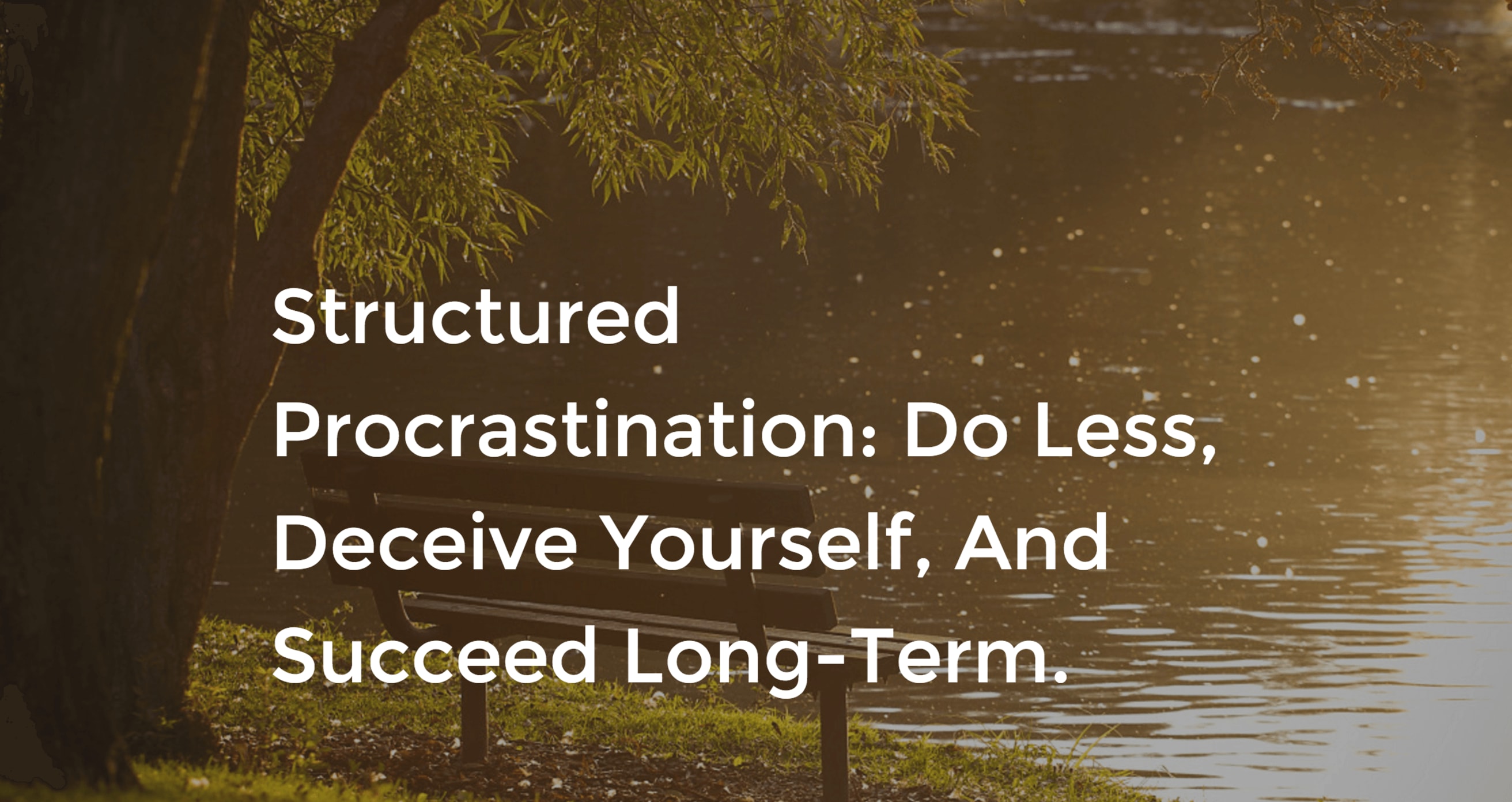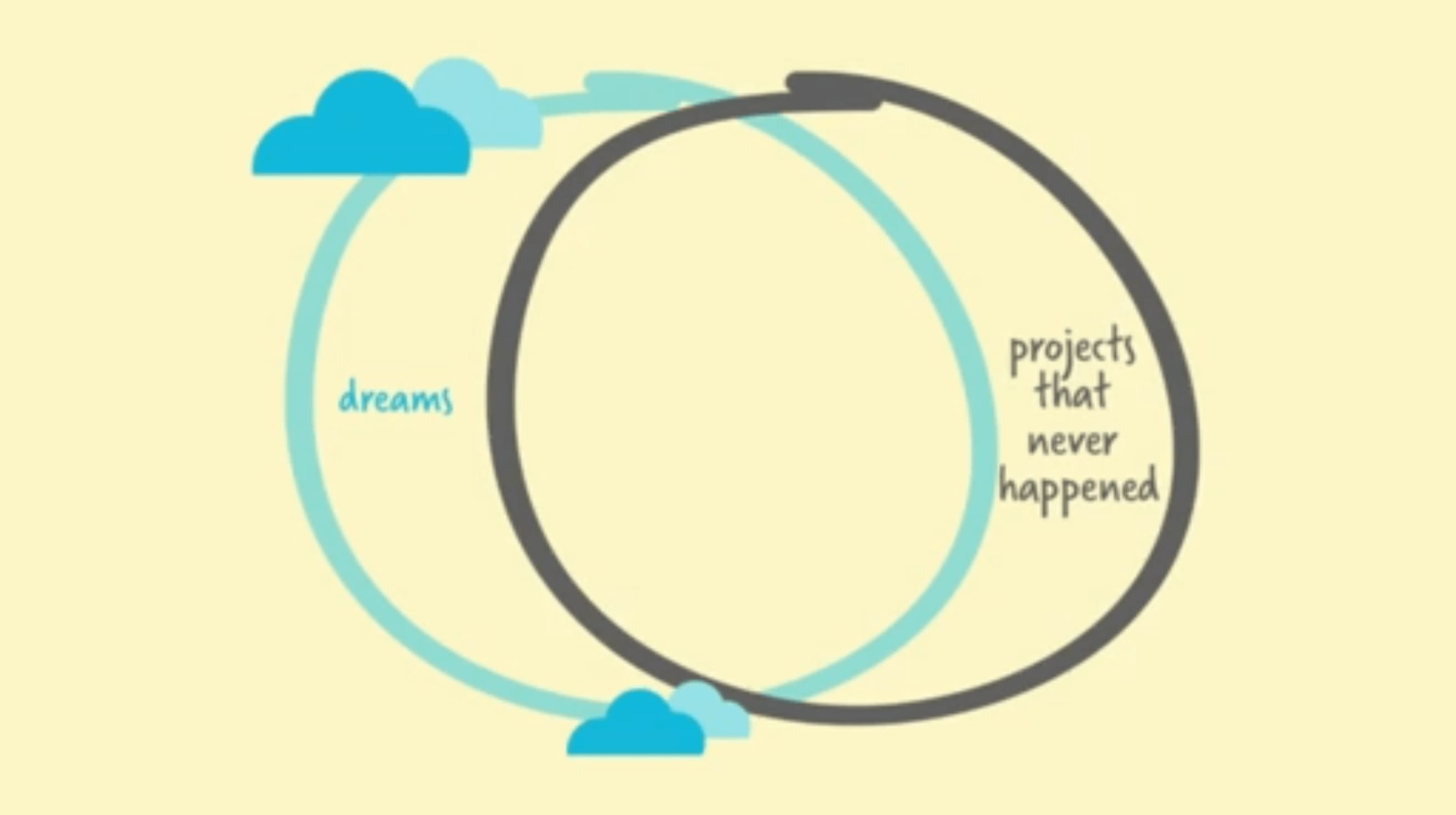It’s the season of New Year’s resolutions once again.
At the end of each year 45% of us roll up our sleeves and optimistically decide what we want to accomplish in the year to come.
Yet, year after year, only 8% of us actually achieve what we resolved to do on January 1st. In fact, 25% of us don’t make it past the first week!
The definition of insanity is doing the same thing over and over again and expecting different results.*
So this time around resolve to take a smarter approach to setting and achieving your New Year’s resolutions. Here are 10 of the best science-backed, battle-tested pieces of advice for making it into the 8% who achieve their goals in 2020.
Change your tactics
The majority of people write down their goals without ever developing a plan to see them through. This year, use these 7 concrete tactics to set attainable goals and develop proven systems for actually accomplishing them.
1. Make your goals bite-sized
One of the worst mistakes people make when setting goals for themselves is aiming too high. That’s not to say having aspirations or even setting lofty goals is a bad thing, but it’s also important to be realistic.
Are you going to pay off all your debt or become an internet sensation in a matter of a few months? Probably not. Those who do it overnight are extremely lucky – one in a billion. Everyone else has gotten there through years upon years of hard, grueling work.
The actual problem isn’t with having lofty goals, it’s that focusing on them can give you tunnel vision and make you impatient, which can lead to feeling like an underachiever.
If you’re shooting for the stars, try not to forget about each individual step that will eventually get you there.
Think of it as if you’re trying to lose 50 pounds. Losing 10 pounds is most definitely easier than losing 50. So plan to lose 10 pounds, and once you do, set your goal to lose the next 10 pounds.
2. Harness the power of productive procrastination

I've always taken pride in my ability to put things – everything, really – off until the absolute last moment possible and somehow still get everything done. It’s never my ideal work situation, and it’s not something I consciously do, but it happens. Every. Time.
I’m not alone in that either. Tons of people procrastinate all the time. But there is another breed of procrastinators out there who knowingly procrastinate in order to get more done.
The idea, often called structured procrastination, comes from a book written by John Perry.
The key idea is that procrastinating does not mean doing absolutely nothing. Procrastinators seldom do absolutely nothing; they do marginally useful things, like gardening or sharpening pencils or making a diagram of how they will reorganize their files when they get around to it. Why does the procrastinator do these things? Because they are a way of not doing something more important. If all the procrastinator had left to do was to sharpen some pencils, no force on earth could get him do it. However, the procrastinator can be motivated to do difficult, timely and important tasks, as long as these tasks are a way of not doing something more important.
You can structure your to-do list in a way that “exploits this,” says Perry. The most important and urgent items reside at the top of the list. The bottom of the list is reserved for things which are still important but may not be as urgent (or dreadful) to check off. Doing the tasks on the bottom of the list "becomes a way of not doing the things higher up on the list.”
That way, you can continue to check stuff off and get a lot done while procrastinating.
3. Plan your upcoming days and weeks before they start
A tactic that has worked wonders for me is a simple one: starting my morning with a predetermined set of goals or tasks.
For me, all it takes is a handful of minutes before I go to bed. I take that time – just before dozing off – to plan exactly what I need to get done the following day. I assign tasks by priority and for time-sensitive tasks, I set a time that I should have the task completed by.
When I wake up, there is no dillydallying or questioning where I should start. I have a clear direction and I know what I should be doing as soon as I open the lid of my computer.
Taking this one step further, I create a rough outline of when and what I should be checking off throughout the week. It’s the same principle, but the weekly projection is usually more susceptible to change on a daily basis – it’s more of a rough sketch, whereas the daily planning is more or less set in stone.
4. Create a “deep work ritual"
If you spend a lot of time in meetings and on calls, chances are your more important tasks keep getting pushed back or simply remain unfinished. Even if you’re just expected to quickly respond to emails, you probably feel like nothing is getting done because every time you start making headway, the phone rings or a new email swooshes its way into your inbox.
Cal Newport has an answer for this in his book titled Deep Work: Rules for Focused Success in a Distracted World. All the emails, calls, and expense reports, he calls “shallow work.” The stuff that actually requires skill and serious attention or focus is considered “deep work,” which you should be prioritizing.
Newport explains that all the wrong things get entered into our calendars, but time for actual work rarely does. You add meetings, calls, and everything else administrative to your calendar. But when was the last time you actually scheduled real work? Newport recommends actually blocking off time for those episodes of real work. Stop making them an afterthought.
But the real trick is actually getting to the deep work once you’ve cleared space in your schedule for it. For this, Newport suggests building a deep work ritual. Whether it’s getting coffee, cleaning your workspace, or something of the like, do it every time you’re about to start a “deep work” session to prepare your brain and to enter the proper mindset.
One way to more consistently achieve a state of real concentration is to have routines and rituals built around deep work. It can be as simple as clearing your desk, or shutting your door. That ritual tells your brain, “I’m now entering deep work mode.” You might have a set routine like getting your coffee and doing a ten-minute walk to clear your head. These type of things can actually help your mind much more easily shift into the right state.
5. Track your progress with daily journals
Shooting for goals is hard work, especially if it’s difficult to see the actual progress. One way to visualize that progress better is by keeping a daily journal.
A common denominator amongst successful people is the fact that many of them keep what William Arruda of Forbes calls a “job journal” to document all their wins.
Before bed each night, recap the entire day, the fun parts, work, anything important that happened, and your progress on your goal(s). Seeing and tracking your progress on a daily basis can provide the motivational boost you’ve been seeking or, if you’ve been slacking off, the gut-check you need.
The site Asian Efficiency put together extensive journaling templates for daily, weekly, monthly, and annual journaling.
6. Use the Paper Clip Strategy

The paper clip strategy comes from Trent Dyrsmid, a rookie stockbroker who became a success story thanks to some serious determination and a smart little tactic.
Every morning, Dyrsmid would have two jars on his desk, one empty and one filled with 120 paper clips. Finish a call and move a paper clip into the other jar. He wouldn’t call it a day until the once-full jar was empty.
Having a visual cue in front of you is a constant reminder of your progress throughout the day. It helps you stay on task and acts as motivation to complete what you set out to do.
Productivity and self-improvement expert James Clear gives some examples for how you can implement your own paper clip strategies:
- Hoping to do 100 pushups each day? Start with 10 paper clips and move one over each time you drop down and do a set of 10 throughout the day.
- Need to send 25 sales emails every day? Start with 25 paper clips and toss one to the other side each time you press Send.
- Want to drink 8 glasses of water each day? Start with 8 paper clips and slide one over each time you finish a glass.
- Not sure if you’re taking your medication three times per day? Set 3 paper clips out and flip one into the bin each time you swallow your pills.
7. Create a “forcing function”
Instead of waiting to do work until you feel motivated, try using a “forcing function”. Serial entrepreneur and angel investor, Dan Martell defines a forcing function as "any task, activity or event that forces you to take action and produce a result.”
How does it work? You put yourself in a position to execute, says Martell. One example he gives is taking work to a coffee shop a few times per week, bringing his MacBook Pro, but leaving behind his power adapter. This provides him with roughly three hours of work time before his computer dies.
That’s when I slam through a bunch of emails, get some serious planning done or design some new product features. There’s something magical about a 3 hour forced completion work session.
Change your mindset
Science has shown that the way you think about your goals can have a huge impact on whether or not you actually achieve them. Here are 3 unconventional ways to mentally prepare yourself for 2020.
8. Think in terms of the immediate reward
Most people see exercise solely as a means of getting healthier in the long-term. But research done by Dr. Michelle Segar, a psychologist who “specializes in helping people adopt and maintain regular exercise habits,” has found that this type of delayed gratification isn't enough to motivate people to exercise consistently.
She found that when people shift their perspective and reframe working out as a means of having more energy, relieving stress, or being in a better mood immediately, they’re actually more likely to prioritize exercise. As Segar explains:
People who make physical activity a priority don’t necessarily have more time than others. Rather, they make sure to schedule time for it because they know it enhances their performance and the quality of their daily lives. It has been shown, for example, that schoolchildren who are given exercise breaks are better able to to pay attention and learn.
Her research suggests that when it comes to developing better habits, we're better off focusing on short-term benefits rather than the long-term payoffs.
9. Get gritty
What sets some students or workers apart from the others? Believe it or not, in most cases, it isn’t skills, talents, or IQ. It’s grit, according to Angela Lee Duckworth, a psychologist at the University of Pennsylvania.
She left her job to teach math to 7th grade students. Quickly, she noticed that the high IQ or talented students often did worse than those who were dedicated and determined to learn the material.
Grit is, as Duckworth puts it, “passions and perseverance for very long-term goals” and “sticking with your future” for years on end.
So how can you develop more grit? James Waters, a former Navy SEAL platoon commander, gave eight tips for being more gritty and sticking with something, even when it’s difficult.
Purpose and meaning. It’s easier to be persistent when what we’re doing is tied to something personally meaningful.
Make it a game. It’s the best way to stay in a competitive mindset without stressing yourself out.
Be confident — but realistic. See the challenges honestly but believe in your own ability to take them on.
Prepare, prepare, prepare. Grit comes a lot easier when you’ve done the work to make sure you’re ready.
Focus on improvement. Every SEAL mission ends with a debrief focusing on what went wrong so they can improve.
Give help and get help. Support from others helps keep you going, and giving others support does the same.
Celebrate small wins. You can’t wait to catch the big fish. Take joy where you can find it when good times are scarce.
Find a way to laugh. Rangers, SEALs, and scientists agree: a chuckle can help you cope with stress and keep you going.
10. Be the verb

When it comes down to it, what it truly takes is action. Bel Pesce, who gave five ways to kill your dreams in a TED talk, shared something very interesting: a venn diagram showing the overlap of the dreams we have and projects that never happen. The overlap is striking.
The thing is, it’s way too easy to get caught up in thinking about various strategies or how to approach something that you end up putting off the action for weeks, months, or even years. As Austin Kleon puts it:
Lots of people want to be the noun without doing the verb. They want the job title without the work...Doing the verb will take you someplace further and far more interesting than just wanting the noun.
Stop worrying about what could go wrong or getting everything right before you start or launch. Stop fantasizing about the end result.
Ultimately, the only way to achieve your goals is through action. Start now.
What New Year's resolutions do you have for the year ahead? What strategies are you using to achieve them? Share your experiences and insights with us in the comments below!
*The original version of this post attributed the opening quote to Einstein. A kind reader pointed out that this was a misattribution. It turns out that, while the quote has been attributed to Einstein, its true origins are actually unknown.

